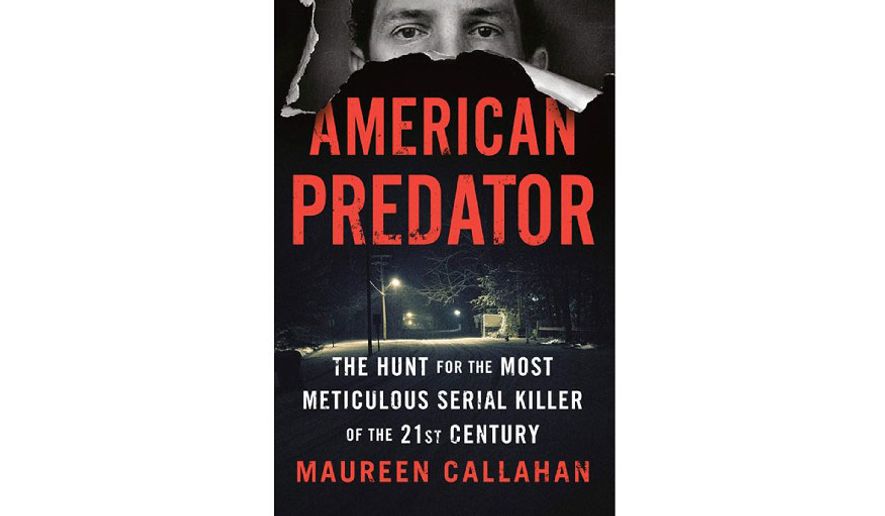OPINION:
Serial killers like Ted Bundy and Jeffrey Dahmer are mostly well known to the general public, but one serial killer, Israel Keyes, an organized and well-traveled predator, is likely not as well known.
Maureen Callahan’s book, “American Predator: The Hunt for the Most Meticulous Serial Killer of the 21st Century,” may change that.
“The rarest form of murder is serial. Despite what we see on “CSI” or “Mindhunters” or the films and procedurals that dominate popular culture, people who kill randomly and for no reason are extremely uncommon. Its why they loom so large in our collective mindscape,” Ms. Callahan writes in the preface of her book. “It’s also why many of us think we know of every such American killer. But the subject of this book was unlike anything the FBI had ever encountered. He was a new kind of monster, likely responsible for the greatest string of unsolved disappearances and murders in modern American history.
“And you have probably never heard of him.”
A big, strong man, Israel Keyes killed at random as he traveled across the country, even to Alaska. He buried his “kill kits,” which included cash, guns, and body-disposal tools, at various locations in the states that he passed through and/or lived. He had no particular M.O., and he covered his tracks well. He killed at least 11 people, but no one knows the exact number of his victims.
According to Ms. Callahan, the FBI and the Justice Department were very cooperative, and she performed extensive interviews with the dedicated FBI special agents who interviewed Keyes. Then, for some reason, that cooperation ended, and Ms. Callahan, an author and investigative reporter with the New York Post, had to fight to get the transcripts of Keyes’ interviews through costly Freedom of Information Act (FOIA) requests. She went to court to obtain the psychological evaluation of Keyes. She also gained access to Keyes’ journals and she interviewed Keyes’ mother.
All that effort paid off, as “American Predator” is an interesting, illuminating and chilling account of a strange and lethal killer who baffled even the FBI’s famed Behavioral Analysis Unit’s profilers.
The book opens with the disappearance of 18-year-old Samantha Koenig in Anchorage, Alaska in February 2012. She had been working at a coffee kiosk during the evening. She appeared to have disappeared without a trace.
A crude, misspelled ransom note with a demand for $30,000 to be deposited in the missing girl’s debit card account, along with a polaroid picture of the missing woman, was found. The ransom note gave the FBI jurisdiction, as kidnapping is a federal offense.
FBI Special Agent Steve Payne first learned of the missing young woman when a friend from the Anchorage Police Department called him.
“This is common practice in Anchorage, a big city that runs like a small town. Cops, FBI agents, defense lawyers, prosecutors, judges — everyone knows everyone,” Ms. Callahan writes. “It is the paradox of being Alaskan: This state is home to rugged individualists who nonetheless know there will come a time, amid the cold, unpitying winters, when they will need help.”
The police and the FBI looked at available video footage and saw the man who abducted Samantha Koenig. They saw she briefly put up her hands, as if she was being robbed at gunpoint, but they were unable to identify the tall man in the taped footage. The video also showed her walking away from the kiosk with the man some minutes later.
The kidnapper began making limited withdraws across Alaska and then New Mexico. After some missteps, the FBI and Texas law enforcement finally arrested him, and he was sent back to Alaska.
There he was interrogated by the FBI, the Anchorage detectives and the U.S. Attorney for Alaska, Kevin Feldis, who took the unusual step of taking charge of the interrogation. He made some initial mistakes with the intelligent and manipulative killer, who agreed to confess and talk about his other victims if his terms were agreed upon.
Keyes’ background was odd in that his family lived simply in the backwoods and they drifted through several states and connected with groups like the Mormons, a white supremist group, and then the Amish. Keyes later joined the army, where he learned skills that aided him in his kills.
Much of the book is about the interrogation and revelations of a cold-hearted, practiced and effective killer.
Although readers know who the killer was and most know the outcome of the story, the book is still quite suspenseful.
“American Predator” is a well-researched and well-written book about a modern monster and the law enforcement people who caught him and tried to understand him.
• Paul Davis covers crime, espionage and terrorism.
• • •
AMERICAN PREDATOR: THE HUNT FOR THE MOST METICULOUS SERIAL KILLER OF THE 21ST CENTURY
By Maureen Callahan
Viking, $27, pages 285




Please read our comment policy before commenting.